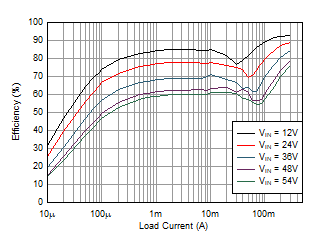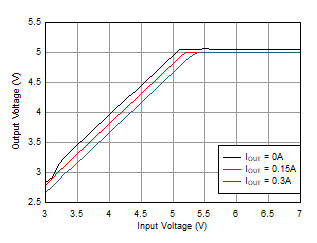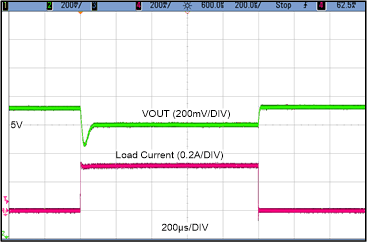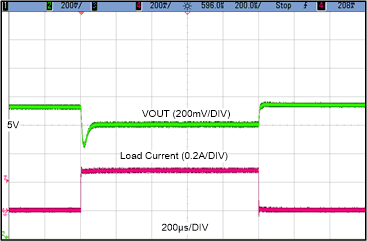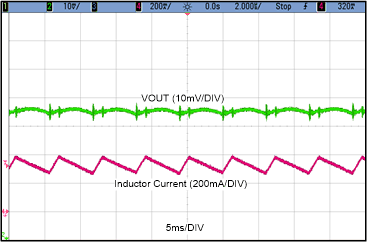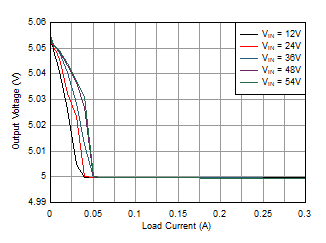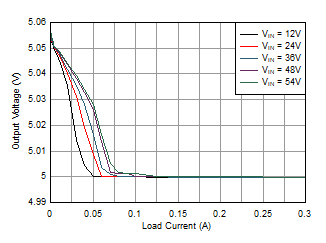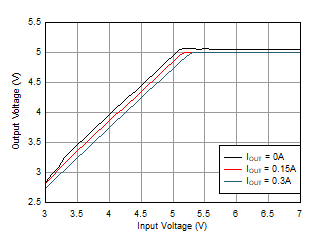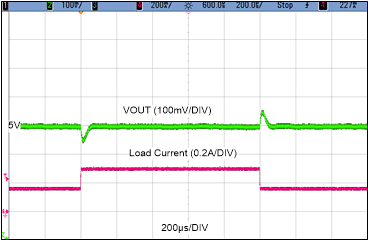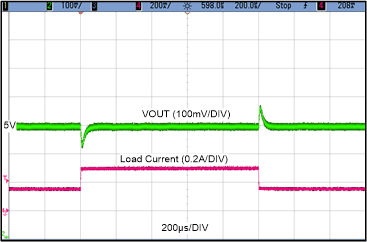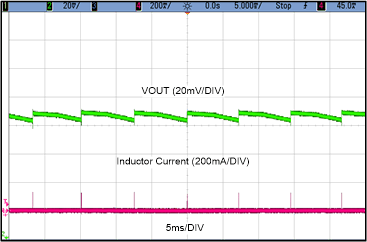SNVSBB4B December 2019 – November 2022 LMR36503
PRODUCTION DATA
- 1 Features
- 2 Applications
- 3 Description
- 4 Revision History
- 5 Device Comparison Table
- 6 Pin Configuration and Functions
- 7 Specifications
-
8 Detailed Description
- 8.1 Overview
- 8.2 Functional Block Diagram
- 8.3
Feature Description
- 8.3.1 Enable, Start-up, and Shutdown
- 8.3.2 Adjustable Switching Frequency (with RT)
- 8.3.3 Power-Good Output Operation
- 8.3.4 Internal LDO, VCC UVLO, and VOUT/BIAS Input
- 8.3.5 Bootstrap Voltage and VCBOOT-UVLO (CBOOT Terminal)
- 8.3.6 Output Voltage Selection
- 8.3.7 Soft Start and Recovery from Dropout
- 8.3.8 Current Limit and Short Circuit
- 8.3.9 Thermal Shutdown
- 8.3.10 Input Supply Current
- 8.4 Device Functional Modes
-
9 Application and Implementation
- 9.1 Application Information
- 9.2
Typical Application
- 9.2.1 Design Requirements
- 9.2.2 Detailed Design Procedure
- 9.2.3 Application Curves
- 9.3 Best Design Practices
- 9.4 Power Supply Recommendations
- 9.5 Layout
- 10Device and Documentation Support
- 11Mechanical, Packaging, and Orderable Information
Package Options
Mechanical Data (Package|Pins)
- RPE|9
Thermal pad, mechanical data (Package|Pins)
- RPE|9
Orderable Information
9.2.3 Application Curves
Unless otherwise specified the following conditions apply: VIN
= 24V, TA = 25°C. Figure 9-16shows the circuit with the appropriate BOM in Table 9-3
Unless otherwise specified the following conditions apply: VIN
= 24V, TA = 25°C. Figure 9-16shows the circuit with the appropriate BOM in Table 9-3
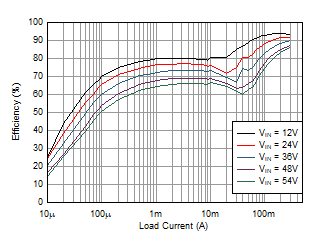
Figure 9-4 Efficiency. Unless otherwise specified the following conditions apply: VIN
= 24V, TA = 25°C. Figure 9-16shows the circuit with the appropriate BOM in Table 9-3

| LMR36503R5 | VOUT = 5 V Fixed | 400 kHz (AUTO) |
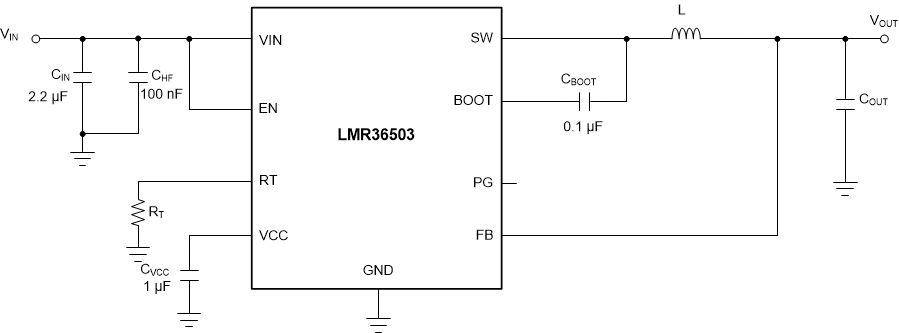 Figure 9-16 Schematic for Typical
Application Curves
Figure 9-16 Schematic for Typical
Application CurvesTable 9-3 BOM for Typical Application Curves
| U1 | ƒSW | VOUT | L | NOMINAL COUT
(RATED CAPACITANCE) |
RT pin |
|---|---|---|---|---|---|
| LMR36503R5RPER | 400 kHz | 5 V | 100 µH, 380 mΩ | 2 × 22 µF | 39.2kΩ |
| LMR36503R5RPER | 1 MHz | 5 V | 47 µH, 84 mΩ | 1 × 22 µF | Short to VCC |
